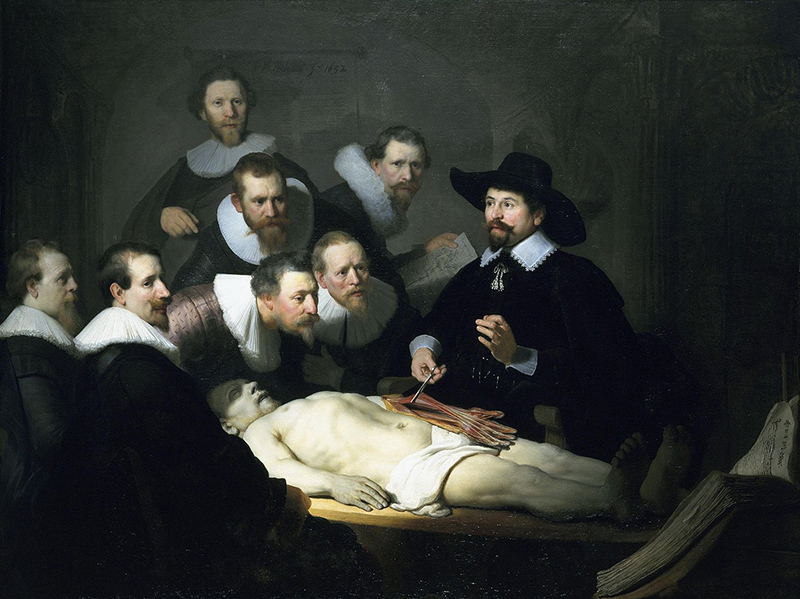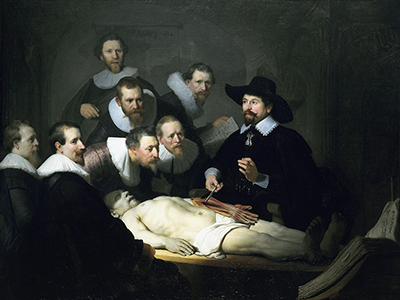Anatomy Lesson of Dr Nicolaes Tulp is one of Rembrandt's most famous paintings. It was painted in 1632 and it depicts what was one of the hot scientific topics of the time: anatomy.
In 1660, the scientific Royal Society was founded in Britain, and much of its activities were focused on exploring human and animal anatomy.
This reflected a growing interest in anatomy throughout the Renaissance. Alongside Vesalius's anatomical drawings, Anatomy Lesson of Dr Nicolaes Tulp is one of the most renowned depictions of anatomy from the early modern period.
What makes it particularly interesting is that it explore the relationship between art and anatomy and collapses the boundaries between the art of painting and the science of dissection.
Anatomy Lesson of Dr Nicolaes Tulp focuses on a real life figure. Nicholas Tulp was famous for being both a surgeon and the mayor of Amsterdam. Tulp would give annual anatomy lessons in the winter time, using the bodies of people who had been publicly hanged as his subjects.
Every year, an artist would be commissioned to immortalise these lessons in the form of a painting. Aged just 26, Rembrandt was chosen for the job in 1632 and Anatomy Lesson of Dr Nicolaes Tulp was born.
As is typical of Rembrandt's paintings, Anatomy Lesson of Dr Nicolaes Tulp is painted in a very realistic style using oils on canvas. As with many of his works, moreover, we see several human figures who are all dynamically engaged with each other, lit by a central source of light.
One thing that commentators have often picked up on when analysing Anatomy Lesson of Dr Nicolaes Tulp is the fact that Tulp's hand and dissecting tool are being used to move the arm muscles in the corpse, thus raising the corpse's arm even though it is dead.
Some commentators have linked this to the philosophy of Descartes, who was writing at around the same time as paintings like Anatomy Lesson of Dr Nicolaes Tulp were being produced. Descartes was very interested in the relationship between brain and body, and body and soul.
Intriguingly, in Anatomy Lesson of Dr Nicolaes Tulp, we see one person's brain moving another person's body. The intellectual Dr Tulp is using an instrument of science and knowledge to cause a dead arm to move itself upwards, and thus to seem uncannily alive.
Rembrandt's use of light here can be linked to another key feature of 17th century: the Enlightenment. Rembrandt seems to be depicting scientists and those interested in anatomy and scientific discovery literally being enlightened by the demonstrations of Dr Tulp.
The light illuminating the anatomy demonstration in Anatomy Lesson of Dr Nicolaes Tulp represents, perhaps, what is usually deemed to be the great period of intellectual Enlightenment that was just beginning.





